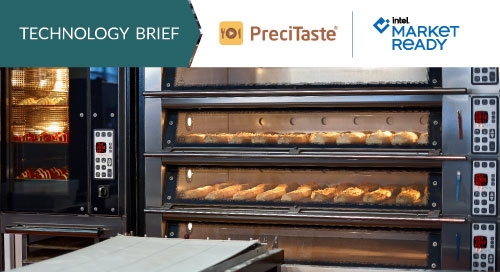When the Customer Experience Feels Deeply Human

As an Italian, I have been educated in the finer points of baking since childhood. Yet even I make mistakes every now and then. So I have the greatest sympathy for bakery workers who have minimal training and even less margin for error. Could technology help them do their job?
It turns out that the answer is yes. The clever application of AI can transform even the most inexperienced worker into a top chef who bakes perfection into every bite. But before I reveal the secret, I must explain why I am so excited about this new technology.
Baking Is a Fine Art
Italians are known the world over for our passion for food. Indeed, we are taught to identify the main ingredients of every dish, trace their origin, and learn how to combine the raw materials to bring out each flavor to its fullest potential. Without question, we have made a philosophy of gastronomy—more, we have made it a sacred art.
Not a simple matter of transforming the chemistry of food, making proteins digestible, and wiping out microorganisms, for Italians, a meal must not be overcooked or undercooked, but done “just right.” An overcooked pizza is too crunchy and crumbles, and undercooked bread feels like Plasticine. We would rather form it into balls and toss it to our dinner companions than eat it.
As a lover of food and a philosopher of aesthetics, flavor, and taste, I have a knack for cooking. But it is easy to make mistakes when baking. Sometimes I fail to set my oven to the right temperature or time my dish appropriately. In the case of bread or pizza, it is downright demoralizing when I fail to get the right crunchiness and crispness that would otherwise delight my taste buds.
AI Powers the Virtual Baker
At this point, you may be asking yourself: What does any of this have to do with technology?
Allow me to draw your attention to PreciTaste, a company that’s part of the broader Intel® Partner Alliance. It has developed an artificial intelligence system that ensures baking perfection.
As I discussed advanced cooking solutions with the company’s executives, I came to appreciate the creative power and ingenuity of their technologies. Their experts used artificial intelligence (in the form of computer vision) to control how bread is baked. The aptly named Virtual Baker is capable of identifying what is inserted into the oven and then selects the appropriate setting.
But it doesn’t stop there. Since the entire cooking cycle is monitored by computer vision, it finds the perfect balance at each moment to avoid overcooking or undercooking the food, as illustrated in Video 1.
With a few minor adjustments—voilà!—a standard oven can be converted into an intelligent one, guaranteeing a perfect outcome. @PreciTaste via @insightdottech
It is worth noting that the Virtual Baker can be installed in any industrial oven, without the need to reengineer the product. Since the technology incorporates Intel® edge computing within the sensor package, the oven manufacturer need only connect a few cables to control the device.
With a few minor adjustments—voilà!—a standard oven can be converted into an intelligent one, guaranteeing a perfect outcome (with no Italian oversight required). The added costs are offset by the operational advantages of transforming the oven from a passive device into an intelligent and autonomous one that saves on human resources, electricity bills, and prevents waste.
To enhance the user experience, the Virtual Baker system identifies on which rack level the food was added, and tracks what’s in the oven. It accepts mixed loads—for example, one tray could be filled with croissants, another with loaves of bread, and a third tray could have dinner rolls.
And if a baker puts an incompatible product mixture into the oven—such as pretzels that bake at 425ºF and cupcakes that bake at 350ºF—they’re notified of the incompatible load.
Monitoring Shelves to Predict Customer Demand
If that weren’t enough, PreciTaste’s technology goes a step beyond. Though the developers could sit on their laurels, after having made an intelligent oven, the PreciTaste experts decided to push their creativity further.
Its Baking on Demand solution predicts real-time demand and keeps an eye on baked inventory so you bake the ideal amount of food—syncing production with demand (Video 2).
Since no customers will have to forego their favorite bread, and no baker will have to produce more bread than necessary, this solution has the further advantage of enhancing sustainability and reducing food waste.
Fresh Bread Satisfies the Customer
Whenever I see technology in the service of humanity, I cannot help but be fascinated by the evolutionary journey that has brought us here. Beyond cooking the perfect bread, this technology saves us time and enhances the quality of our daily lives.
I say this because it is not limited to streamlining operations and workplace efficiency; it enhances the consumer experience. Though it is often referred to as “customer experience,” for an Italian writing about food, it seems more apt to talk about the “human experience.”
After all, finding your favorite bread in stock, fresh, and cooked to perfection satisfies two of your basic needs: namely, the need to be nourished and to feel cared for. The level of customer care that many companies used to aspire to achieve—that makes us feel seen and appreciated in unexpected moments, and fills us with a sense of satisfaction—is now within reach, thanks to PreciTaste’s technological ingenuity.
What it really comes down to is satisfying the human experience by showing care, attention, and fulfilling our unspoken, though deeply felt, commitment to one another.